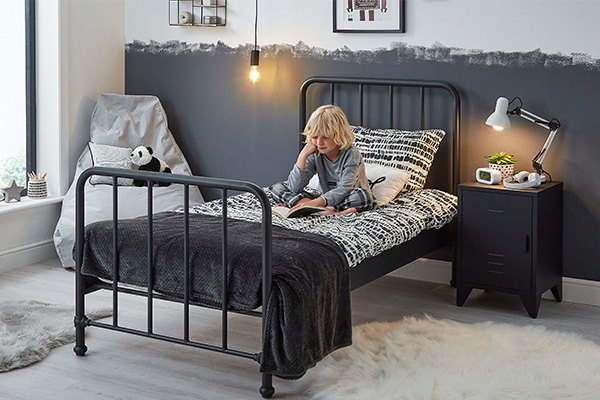When it comes to designing and planning your child’s room, it’s always a good idea to think about what they will need as they grow. Read our handy guide to find out more.

Anne Davies
Mum of a tweenager and owner of Room to Grow. Anne works with the world’s leading manufacturers to source the best bunk beds, high beds, mid sleepers and low beds in all varieties. She knows as a parent how tricky it can be choosing the right bed that gives the optimum storage, study and sleep space without compromising on style. An expert in helping parents find the right bed for their child and creating a dream bedroom.

When it comes to designing and planning your child’s room, it’s always a good idea to think about what they will need as they grow. A single bed is perfect for children of all ages…. from toddlers to teens, which is why this classic bed design is always so popular. With many different designs, colours, materials and styles a single bed is often used by families for years. Swapping between children as they grow and even relegated to the guest room once your child leaves home.
Thinking About A Single Bed?
With a traditional low-profile bed frame, there is often the option to maximize under-bed space by adding an under-bed drawer or drawers. Some kids single beds have the option of a trundle drawer that slides under the bed and you simply pop in a mattress to create an instant sleepover bed for your overnight guest. Perfect for those ever-popular sleepovers! Or if you prefer, you can use the spacious under-bed drawer as additional storage for bedding, toys, or games.
Some beds have clever storage built into the headboard or some have a spacious boarded storage area within the bed frame itself, which can be accessed by a gas lift mechanism to access the storage space underneath the bed.
Many single beds come with matching furniture too, so you will be able to kit out your child’s bedroom with a full range of coordinated furniture.
Shop Children's Single Low Beds >
Here are some frequently asked questions by our customers that you may find helpful in choosing your single low bed:
What size is a single bed?
Single beds may be UK or European in size. This means the bed takes either a UK mattress 90cm x 190cm long or a European mattress 90cm x 200cm long. Depending on your room size a European bed is often advantageous for tall children due to the extra length.
What age should a child go into a single bed?
A child can go into a low single once they have outgrown their cot which is usually around 18-36 months onwards.
If you opt for a low single bed rather than a starter or toddler bed then you may want to consider investing in a bed guard to ensure that your little one doesn’t go bump in the night. They easily attach to the bed frame if you opt for a solid rail, or there are other options such as the Hippychick Dream Tubes which are a great solution to stop little ones from falling out of bed. They are simply inflatable bed guards that fit into pockets within the fitted sheet.
How much weight can a single bed hold?
All of our single low beds are tested up to 80-100kg because they are designed for children, however, it is not to say that an adult cannot sleep in the bed.
What mattress should I use?
Use the mattress size that is advised by the manufacturer to ensure that it fits within the bed frame.
This information will be clearly detailed within the product information on the product page.
A standard UK single bed takes a mattress size 90cm wide x 190cm long compared to a European / Continental single bed which requires a mattress of 90cm wide x 200cm long so just an extra 10cm longer. Each of our beds details whether it needs the standard UK or Continental-sized mattress. This doesn’t affect your duvet size but for your fitted sheet, you will need a large single fitted sheet to make sure it can accommodate the extra length.
Because of the low profile, there isn’t usually a safety recommendation for the mattress height, however, it’s always worth checking the product information because sometimes the design can dictate the mattress height.
What safety issues should I consider?
- When properly constructed and assembled, your bed will be structurally safe. Safety issues come not assembling the bed frame correctly so always read the instructions carefully.
- If you need to fit a temporary safety rail, ensure the safety rail is fitted securely, following the manufacturers’ instructions.
- We recommend that you only use the correct size mattress for the bed as specified on the product page.
- Regularly check and ensure that the bed is free from damage, and that all fixings are secure. Tighten fixings every 6 months to keep the bed stable.
- Do not use substitute parts that are not designed for use with the bed. Always contact us for replacement parts.





